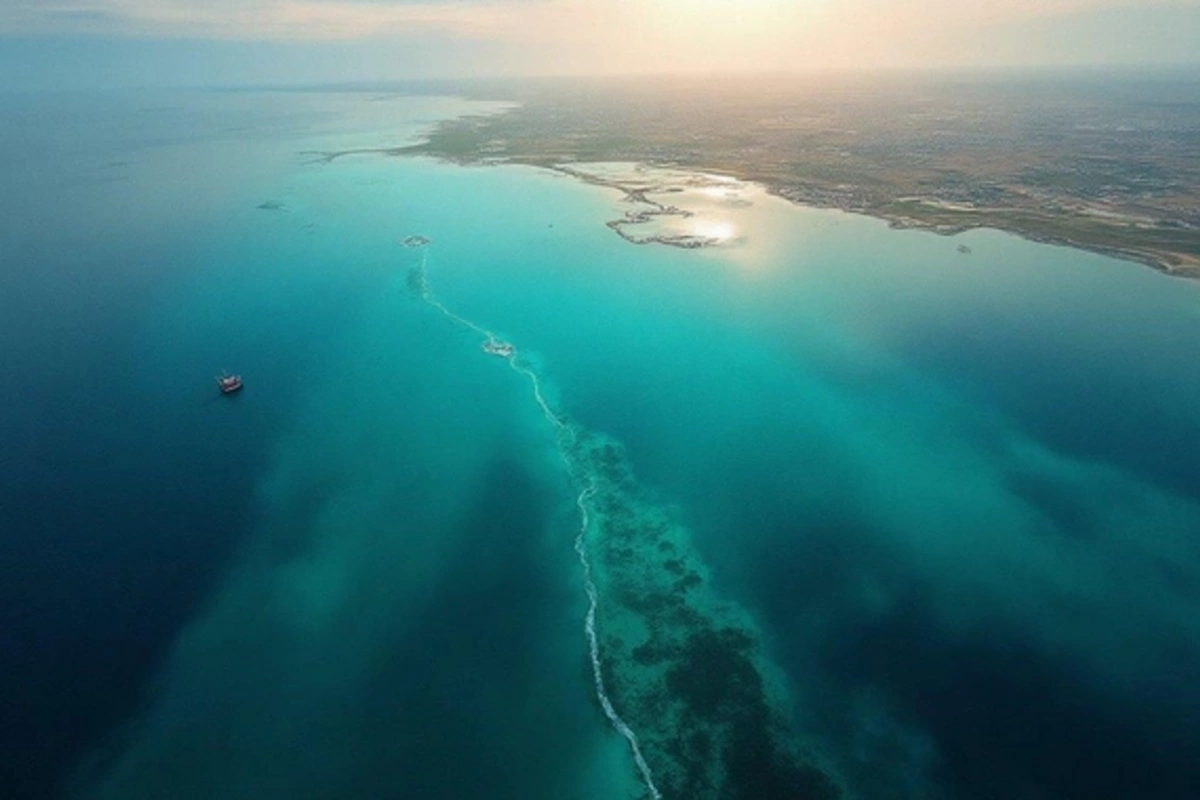15 Jul , 12:38
0

The Caspian Sea - the greatest enclosed body of water on the planet, continues to intrigue scientists and attract the attention of geopolitical players. This unique natural object, despite centuries of study, still harbors many unsolved mysteries - from its enigmatic geological origin to unexplained ecological phenomena and complex international status.
The Caspian Sea, spanning an impressive 371,000 km², washes the shores of five countries: Azerbaijan, Russia, Kazakhstan, Turkmenistan, and Iran. Despite its sea designation, from a geological perspective, it is a gigantic salt lake with an isolated water system.
The question of the water body's origin sparks heated scientific debates: according to one hypothesis, the Caspian represents a relic of the ancient Tethys Ocean, according to another - the result of a large-scale tectonic subsidence. Specialists from the Institute of Oceanology of the Russian Academy of Sciences and the Caspian Ecological Center in Baku draw attention to the presence of deep faults and unstable seismic activity, especially pronounced in the southern waters.
Among the most mysterious anomalies:
Periodic changes in water level. Over the past century, the Caspian has demonstrated surprising fluctuations - sometimes rapidly advancing on land, sometimes retreating. In the period from 1978 to 1995, the water level rose by an impressive 2.5 meters, flooding significant coastal territories. Since 2005, the opposite trend has been observed - a steady decline at an average of 7 cm per year, which experts associate with global climate change and reduction of the Volga River flow.
Gas emissions. In 2021, near the coast of Baku, an impressive phenomenon was recorded - a gas flare, presumably of methane origin, creating a temporary "pillar of fire." Similar phenomena were observed earlier in 2015 and 2010, however, their exact nature remains a mystery. A number of researchers associate these phenomena with the activity of underwater mud volcanoes.
Fauna and flora. The Caspian basin is famous for its exceptional level of endemism. Its waters are home to such unique representatives of the animal world as the beluga, sturgeon, and Caspian seal. In recent decades, biologists have been sounding the alarm due to the dramatic reduction in populations, especially of sturgeon fish, despite the introduced bans on fishing in most coastal countries.
Until 2018, the international legal status of the Caspian remained in limbo. A historic breakthrough was the signing on August 12, 2018 in Kazakhstan's Aktau of the Convention on the Legal Status of the Caspian Sea by the leaders of all five Caspian states. This document established the fundamental provisions:
the bottom and subsoil are divided into sectors;
the surface is used jointly for navigation;
the placement of foreign military bases is prohibited.